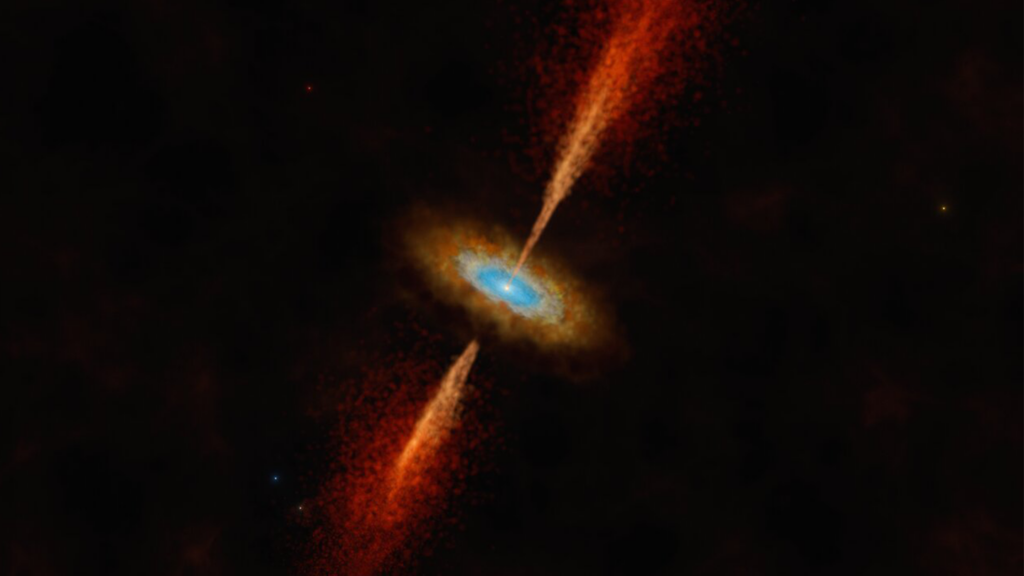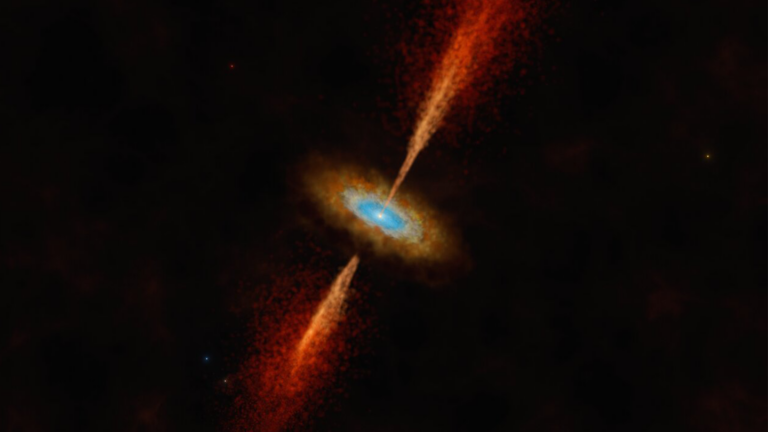For the First Time, Astronomers Detect an Extragalactic Star Surrounded by a Disc
The star system HH 1177 resides within a stellar nursery located approximately 200,000 light-years distant from Earth.
For the first time, astronomers have observed the presence of a disk around a young star situated in a galaxy beyond our own, known as the Large Magellanic Cloud. This extragalactic neighbor of our Milky Way galaxy is positioned nearly 200,000 light-years away from Earth and could potentially collide with our galaxy in approximately two billion years. The groundbreaking observations were conducted using the Atacama Large Millimeter/submillimeter Array in Chile.

The star system HH 1177, located within a stellar nursery in the Large Magellanic Cloud, features a massive young star that is undergoing growth and accumulating matter from its surroundings. This matter accumulation gives rise to a spinning disk known as an accretion disk—a phenomenon observed for the first time in an extragalactic context. The discovery is detailed in a study published in the journal Nature on November 29.
The study builds upon earlier observations of the HH 1177 star system conducted with the Multi Unit Spectroscopic Explorer instrument on the European Southern Observatory’s Very Large Telescope in 2018. At that time, the telescope detected a jet emanating from a developing star deep within a gas cloud in the Large Magellanic Cloud, indicating ongoing disc accretion.
To confirm the presence of an accretion disk around the star in HH 1177, researchers measured the movement of dense gas surrounding the young star. As matter is drawn toward the expanding star, it forms a spinning disc instead of falling directly onto the star. The variation in rotational speed within the disc served as crucial evidence for the presence of an accretion disc around the star.
The precise frequency measurements conducted by ALMA (Atacama Large Millimeter/submillimeter Array) allowed astronomers to discern the characteristic spin of the disc, affirming the detection of the first such disc around a young star beyond our galaxy.
Unlike low-mass stars like our sun, massive stars similar to the one in HH 1177 form more rapidly and have shorter lifespans. Observing these giant stars in our Milky Way galaxy is challenging due to the obscuring effect of dusty material. However, in the Large Magellanic Cloud, where the star system HH 1177 is situated, the lower dust content provides astronomers with an unobstructed view of star and planet formation, presenting an exciting opportunity for exploration in a different galactic environment.
Do not forget to share your opinion with us to provide you with the best posts !




0 Comments